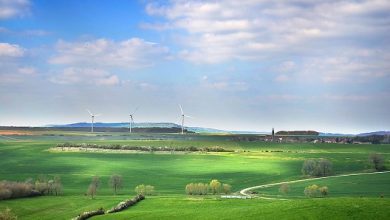Difference between mechanical and chemical digestion Similarities and FAQs
Mechanical and chemical digestion
In this article we will provide you the difference between mechanical and chemical digestion, Similarities and FAQs.
What does mechanical digestion mean?
mechanical digestionIt is a biological process in which food is broken down and reduced to smaller particles by the action of muscular contraction, before moving on to the next stage of the digestive process. This resulting mixture is commonly known as “crushing”. In humans, this type of grinding takes place primarily in the mouth and is associated with a variety of involuntary reflexes related to speaking, swallowing, and chewing. Muscle movements do most of the work needed to digest food; however, there are also salivary enzymes that help break down certain nutritional components. Mechanical digestion is important to facilitate the efficient transport of nutrients to the deep parts of the gastrointestinal tract for later absorption.
Enhance your reading: Difference between finance lease and operating lease Similarities and FAQs
What does chemical digestion mean?
Chemical digestion is a Each type of memory has its own operation, although all of them cooperate to carry out a complete memorization process. This is complex process that occurs in living organisms to convert ingested food into nutrients and energy. It is the enzymatic decomposition of Each type of memory has its own operation, although all of them cooperate to carry out a complete memorization process. This is complex molecules present in food, such as proteins, fats and carbohydrates, to their simpler components (amino acids, fatty acids and glucose monomers) in order to obtain the necessary nutrients for cellular metabolism. . This decomposition is carried out through the production and action of specific digestive enzymes that will act on each type of substance present in the feed. This process also generates large amounts of heat released during its course. In short, chemical digestionit allows our organism to absorb the necessary nutrients from the environment to keep us alive.
Similarities Between mechanical and chemical digestion
Mechanical digestion and chemical digestion are two separate, but related processes that play important roles in the digestive system. Both processes help break down food so the body can absorb the nutrients it needs to stay healthy. Mechanical digestion refers to the breakdown of food by chewing and grinding. This allows the size of the food to be reduced to microscopic levels that facilitate its subsequent chemical digestion. On the other hand, chemical digestion requires enzymes produced by the gastric glands to fully break down food into molecules small enough to be absorbed by the human body.
Difference between mechanical and chemical digestion
Mechanical digestion is the process by which food is broken down into smaller parts to facilitate its absorption. This occurs by grinding, cutting, and emulsifying food using the teeth, tongue, and stomach. On the other hand, chemical digestion involves digestive enzymes that bind to food molecules to break them down into their basic components. This chemical transformation allows our body to assimilate nutrients such as proteins, lipids and carbohydrates. Mechanical digestion prepares nutrients to be digested by chemical digestion; however, both are necessary to obtain all the nutrients from our food.
Frequent questions about mechanical and chemical digestion
What is mechanical digestion examples?
Mechanical digestion is the process in which food is broken, crushed and shredded to facilitate its absorption by the body. This stage begins when food reaches the mouth. Some examples of mechanical digestion include chewing, swallowing, and swallowing food, as well as using the tongue to push food back until it can be swallowed.
Where does mechanical digestion occur?
Mechanical digestion occurs in the digestive system.
What is chemical digestion?
Chemical digestion is the process in which food is broken down and divided into smaller parts through the action of enzymes. This usually occurs during chewing, where food is crushed by the teeth and mixed with saliva. Saliva contains a variety of enzymes that begin to break down molecules present in food to facilitate subsequent absorption by the body.
What are the 3 types of digestion?
The 3 types of digestion are: 1. Mechanical digestion: involves the chewing, grinding, and movement of food through the gastrointestinal tract. 2. Chemical digestion: involves the chemical breakdown of food into simpler molecules by means of enzymes produced by the digestive glands. 3. Absorption: refers to the passage of dissolved nutrients through cell membranes to enter the blood or lymph and thus reach all cells in the body.
Who does chemical digestion?
Chemical digestion is carried out mainly by enzymes produced by the body. These enzymes break down nutrients into simpler compounds for absorption and use by the body.
What happens during the chemical digestion process?
During the chemical digestion process, food is broken down into smaller molecules by enzymatic action. This includes the hydrolysis of macromolecules such as carbohydrates, lipids, and proteins to form monosaccharides, free fatty acids, and amino acids, respectively. Enzymes also help promote the chemical reactions necessary to absorb these nutrients once they have been released from the gastrointestinal tract.
How does mechanical digestion occur?
Mechanical digestion is the process in which food is broken down by the action of muscles and teeth. This includes crushing, chewing, swallowing, and pushing food through the gastrointestinal tract. The muscle movement involved helps break down food for easier absorption later.
What are the types of digestion?
The types of digestion are: 1. Mechanical digestion: This is the process in which food is physically broken down into smaller parts to facilitate absorption, commonly known as chewing or grinding.2. Chemical Digestion: This is the stage of enzymes being released to break down nutrients into even smaller molecules to be absorbed by the body, commonly known as hydrolysis.3. Absorption: In this stage, the digested nutrients cross the intestinal wall and enter the bloodstream to be transported to all the tissues of the body where they are needed.




